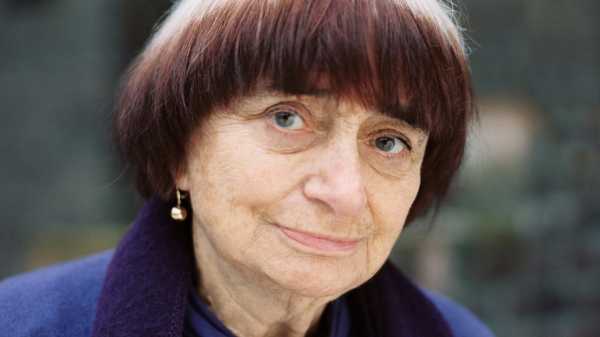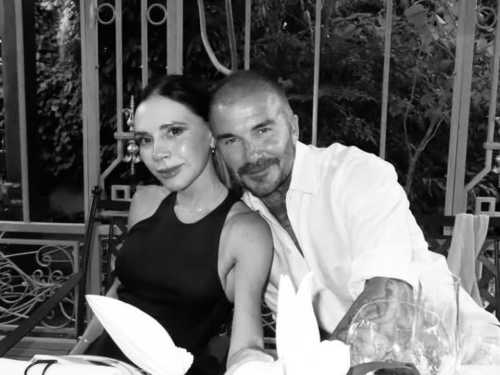
The French filmmaker Agnès Varda, whose movie “Faces
Places”
is up for Best Documentary tonight, is not only the oldest Oscar nominee
in history; she is also older than the Oscars themselves. She was born,
in Brussels, in May of 1928, a year to the month before the Academy of
Motion Picture Arts and Sciences held its first awards ceremony, and
made her first film, “La Pointe Courte,” at the age of twenty-seven.
Aside from her previous work as a photographer, she had no formal
training in cinema. “La Pointe Courte” later earned Varda the nickname
Grandmother of the New Wave—a slightly strange distinction, since she
was born only a couple of years before other pioneers of the movement,
like her husband, Jacques Demy, or her friend Jean-Luc Godard, who was
twenty-nine when “Breathless” came out, in 1960. But Varda got there first.
In the course of her career, Varda has earned more than fifty credits as
a director of both fictional films and documentaries, and more than
forty as a writer. This is the first time that she has been up for an
Academy Award, though in November, she became the first female director
to receive an honorary lifetime-achievement Oscar from the Academy.
“Faces Places,” which Varda directed with the artist JR, is in some ways
her most easily accessible film. Travelling around France in JR’s van,
which is set up with a photo booth and large-format printer, the two
stop by towns and country villages to meet and photograph the people who
live in them. They leave behind a series of artworks pasted outdoors, as
is JR’s style, on the sides of buildings and barns, boulders and
shipping containers. JR and Varda have an endearing buddy-comedy
dynamic, affectionate and playful. He teases her about her tiny, gnarled
toes only to plaster a picture of them on a billboard, and posts
photographs of her eyes on the top of the boxcars of a freight train.
Seen from above, they seem to slither like some new bionic animal,
watchful and weird. The symbolism is not lost on either director. “This
train will go places you never will,” JR tells her.
On the other hand, you could say the same thing of Varda. The Tuesday
before the Oscars, she was at the Sanders Theatre, at Harvard,
delivering the second of two lectures she had been invited to give as a
Norton Professor of Poetry. Varda’s career has been so long and fruitful
that she can organize her work by century. Her first talk covered the
things she made during the twentieth, renowned films like the
groundbreaking “Cléo from 5 to 7” (1962), which follows an hour and a
half of a young woman’s life in real time as she waits to find out
whether she has cancer, and “Vagabond” (1985), the tale of a young rebel
without a cause (played by Sandrine Bonnaire) who tries to piece
together an itinerant life as a laborer in the southern French
countryside.
In her second lecture, Varda turned her attention to her more recent
work making documentaries and art installations. Varda, who is gnomish
in stature, sat behind a lectern on a tall stool, her feet dangling high
above the ground, as a child’s do on a bus. (“I think I’m very small,”
she observed as she got settled.) She wore a billowing, speckled tunic
decorated at the neck with a dragonfly pin; her pants, shirt, socks, and
shoes were in shades of burgundy, her favorite color. Varda’s hair, cut
in her signature pageboy, is bright white on top, surrounded by a ring
of deep red. Seen from the audience, she looked like a hip monk, or a
button mushroom.
Varda had an enormously productive stretch in the nineteen-eighties, a
decade that culminated, terribly, in Demy’s death, from AIDS, in 1990.
She made a few films in the nineties, including “Jacquot de Nantes,” a
tribute to Demy and his childhood, which she filmed as he was dying, but
she suffered long dry spells. Inspiration struck again just before the
turn of the millennium, while Varda was sitting at a café near her home
in Montparnasse. The neighborhood market had ended for the day; as she
watched, she noticed that men and women were picking up scraps left
behind by venders. “I looked carefully, and suddenly a sentence came
into my head: they are about to eat what we throw away,” she said. That
observation turned into “The Gleaners and I” (2000), a documentary about
people around France who collect food and objects that others have left
behind, whether it be from the fields after a harvest or from urban
garbage bins.
Varda calls her form cinécriture, a portmanteau of cinéma (filmmaking) and écriture (writing). Her documentaries have an
open-ended, essayistic quality, flowing easily from image to image,
encounter to encounter, so that the impression, in the moment, is of a
kind of loose organization by association that gradually leads the
viewer to larger realizations. “The Gleaners and I” is a film about
trash in the way that “Apocalypse Now” is a film about a river. Without
stumbling into didacticism or pity, it reveals the thoughtless
wastefulness of our industrialized society, and looks sympathetically at
the marginal figures who, whether from necessity or conviction, take
what the rest of us have discarded. Varda, as the film’s title implies,
is a gleaner, too. She loves the burnt edges of cinema, finding
treasures in images or ideas that other directors might reject. At one
point in “The Gleaners and I,” Varda includes a clip captured by her
camcorder when she had thought it was turned off: the jiggling dance
made by her dangling lens cap, which she sets to an exuberant jazz riff.
The sequence has no narrative utility. It is simply the accidental
evidence of a moment in time, one in which the camera seemed to spring
free of its operator and decide for itself what it thought bore looking
at.
Varda said that she had intended “The Beaches of Agnès,” (2008), the
cinematic memoir that she made in advance of her eightieth birthday, to
be her last film. Then her daughter, Rosalie, who helps to run the
production company that Varda and Demy founded, introduced her to JR.
Varda has frequently appeared in her own documentaries, but having a
co-director allowed her to engage in a new kind of self-examination.
“Aging for me is not a condition, but a subject,” she said, one that
JR’s interest in her allowed her to explore even as she kept her focus
on other people, “getting the best of their worlds, the best of their
behaviors.”
Varda read from a binder of notes, aided by film clips and photographs
projected onto a large screen above her, occasionally expressing
frustration at technical difficulties while welcoming other, more humane
interruptions. At the sound of a tiny wail from the audience, she
paused. “Is there a baby? How lovely,” she said, sounding genuinely
delighted. When a photo of Varda as a young woman posing, in profile, by
Bellini’s painting “The Miracle of the Cross at the Bridge of San
Lorenzo”
came onscreen, the audience gasped. Varda had placed herself in front of
a pack of sober-faced gentlemen, some of whom seem to have her same
haircut, kneeling in the painting’s lower right corner. She looked
austerely beautiful, uncannily like a member of their group. The next
slide showed the painting in full, revealing an enormous Venetian vista
of which Varda’s gentlemen form only a minor part. “We are very small,
in proportion to what is art, but we are very big, because we can stand
up and isolate ourselves from the majority,” she said.
Varda has a way of abruptly ending her movies, as if to eliminate any
possibility of sentimental closure, and the same was true of her
lecture. Suddenly, it was over. She seemed proud. “I hope you did enjoy
it, because I felt good,” she said, to applause.
Afterward, Varda sat backstage, relaxing in French and greeting friends.
An acquaintance had given her two containers of chocolate pudding, which
she tried to pawn off to the French consul of Boston, who had come to
pay his respects. “I’m leaving at eight in the morning, I’m not going to
eat pudding all alone in my hotel room,” Varda said. After a week in
Boston, she would be flying to Los Angeles. JR had already made the
trip, with a companion of sorts—a life-size cardboard cutout of Varda.
He documented the stages of his journey on Instagram. There was Varda, a
quizzical look on her face, going through a baggage scanner at the
airport; there she was in a recording studio with Pharrell, and
schmoozing among her fellow-nominees at the Academy’s annual pre-Oscars
luncheon.
In his latest posts, JR, back on the East Coast, had attached her to a
bouquet of balloons and sent her floating above the streets of New York.
“He’s making fun of me!” Varda said, not unhappily. “I called him, I
said, ‘How did you get me back down?’ He said, ‘I used metres and metres
of nylon thread to be sure not to lose you!’ ”
“Faces Places” was widely seen and admired in France. More unusually, it
found an enthusiastic audience in the United States. “Maybe something
that amuses the Americans is that they are so worried about age, and I’m
not at all,” Varda told me. “The fact that I’m going around with a man
who is fifty-five years younger than I am, I think that makes them
laugh, but also bothers them a bit.” Americans, Varda thinks, have more
of an anxious relationship to aging than the French do; certainly few
people in either country embrace age with as much whimsy and confidence
as she has. “I’m just a little deteriorating lady,” she said, using a
word, abîmée, that might refer to a rotting piece of fruit. “But I’m
not sad! I have trouble seeing. I don’t hear well. I’m not good with
stairs. But people always tell me that I’m full of energy. I am! Energy
has nothing to do with the body. It’s the mind, it’s the brain, it’s the
joie de vivre.” She paused to consider. “But listen, I don’t want to say
that I’m in great health, either.”

Further Reading
New Yorker writers on the 2018 Academy Awards.
Varda, who has maintained a cheerfully blasé stance regarding the
Oscars, doesn’t think that “Faces Places” will win. (At the César Awards
in France, which took place on Friday, the film lost out to Raoul Peck’s
James Baldwin documentary, “I Am Not Your Negro.”) She’s been scoping
out the competition, and is betting on “Last Man in Aleppo,” about the
devastation of Syria’s civil war. “The other films we’re nominated with
are on serious subjects. It’s not that we’re not—but we’ve taken on this
role of being go-betweens between reality and the spectator,” she said.
“My films aren’t about spectacle. They’re an invitation to reflect, with
a smile. Voilà. I don’t want to become a serious, annoying sociologist.
I try to regard sociology as a part of everyday life.”
Part of the appeal, and the power, of “Faces Places” is the subtlety of
its sociological approach. The movie features some people whose politics
are clear, like a group of dockworkers in the north of France who are
members of a proudly left-wing union that happened, at the time of the
filmmakers’ visit, to be on strike. (Varda directs JR to photograph
their wives, a feminist tribute to less-visible forms of labor.) Others,
it’s safe to assume, are Marine Le Pen supporters. But Varda and JR
decided not to raise the question. “Reality is much stronger than our
impressions of it, much stronger than our best intentions,” Varda said.
“And that’s why JR and I said, ‘We’re not even going to ask them who
they’re voting for.’ Maybe there are people who just want to meet other
people. Maybe it’s enough to just sit together, eat a tart together.
Sometimes people offered to cook for us and we ate with them without
asking them anything about politics. I didn’t want to know, because in
the South of France, lots of people are right-wing. We didn’t want to
have a hard time, but we didn’t want to judge them, either.”
Varda said that she and JR have decided not to allow themselves to feel
the Oscars pressure. She has already had her time in the sun of
celebrity. “We were kings during the New Wave!” she told me. “There
were only three or four countries that made movies, so we were the
little heroes of contemporary cinema.” Win or lose, she and JR have
something to look forward to. “We’ve made a reservation to have a big
Mexican feast the day after,” she said. And what will she wear to the
ceremony? “Well, you know, when I got my Honorary Oscar in November, I
wore a summer dress that I’ve worn many times, and I think I’m going to
wear a pajama”—the tunic-and-slouchy-pants combo that she has been
wearing almost as long as her pageboy. “I don’t think it’s that
important. In any case, I’m not known for being dressed by couturiers.”
Designer or not, it’s hard to imagine that her clothes won’t stand out.
“I wore black until I was twenty-five, like many young people. Everybody
did. It was crazy! But now, getting older, I think color does me good.”
Regardless of Sunday’s results, Varda has a good idea of what will come
next. In May, she turns ninety. For the past decade and a half, she has
been working on visual art in the form of installations that combine
video, photography, and sculpture. Varda refers to her career in art as
her “third life,” following photography and film. “The screen is
magnificent, but it’s flat,” she said; her installations allow her to
make fuller use of space. One celebrated installation, “Patatutopia,”
features seven hundred pounds of potatoes, a mighty tribute to the
humble vegetable that so captivated her in “The Gleaners and I.” (People
still send her heart-shaped potatoes in the mail.) And in July, she will
be at the Liverpool Biennial to exhibit one of her “film cabins:” a
small shed whose wall and roof are made of rolls of film from her
movies, in this case, “Happiness” (1965). Inside, she plans to cultivate
sunflowers, so that in a house full of daylight and old images,
something new can grow.
Sourse: newyorker.com






